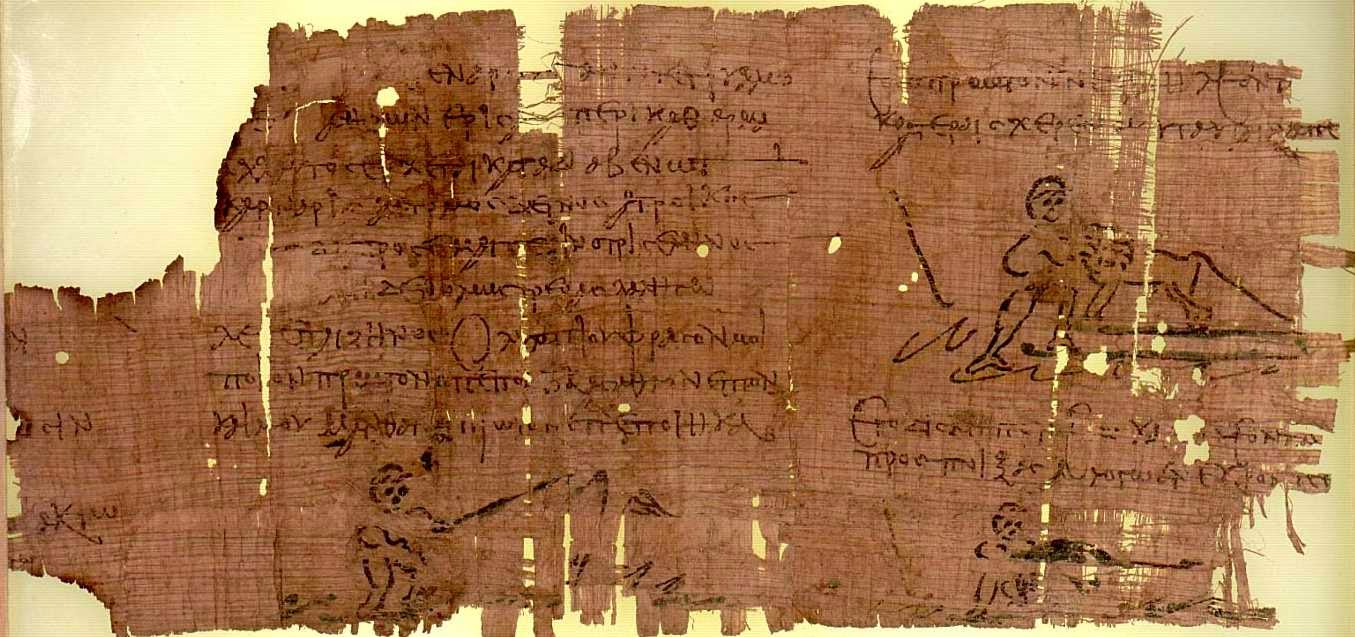 |
| Example of a papyrus (source: Wikimedia, public domain) |
Paper had been and has been
an essential part of mankind. It allows improvement it recording, writing, and
communication. Many civilization tried to create a form of medium for writing,
from Americas to China. But the Egyptians were among the first, if not the
first, to develop a material that would lead to creation of paper. From the
stems of a plant, the Egyptian created the papyrus.
The papyrus was one of the greatest contribution of Egyptians to mankind. Papyrus was a change from the traditional use of cuneiform and stones to record or to write. It allowed the easier preservation of the history of the Egyptian history and culture. It became a monopoly which directed for the ancient to look upon the Egyptian civilization with high regards. This monopoly led to the development of modern paper.
Papyrus was an innovation
unique to the Egyptians. The oldest know papyrus in Egypt was dated from 3500
BCE to 3000 BCE. Papyrus were made from the papyrus plant or cyperus papyrus. The papyrus plant was
an aquatic plant that grew abundantly in the shallow waters of rivers of Africa.
In the case of Egypt, the banks of the Nile became breeding grounds for the
papyrus plant. The climate of Egypt also allowed for the flourishing of
papyrus. Papyrus survive well in dry climates of the desert. And so, many
records and Ancient Egyptian sources written in papyrus survived intact and
found in the humid and dry climate of deserts.
The production of papyrus was
simple. First, the stalk of the papyrus plant would be taken. Its outer skin
would be removed to gain access of its fibrous core. The fibrous core would
then be cut into strips, soaked in water, and placed each one vertically and side
by side. Then another layer of strips would be added but this time in a horizontal
direction. The water and the sap of the papyrus plant became the binding agent
of the paper. After the two layers placed, it would then be hammered with a
stone and let dried under the sun. It would then be pressed for one last time
before completion. Sizes varied but usually, it was 8.5 inches in width.
According to the Roman writer
Pliny the Elder, quality of the papyrus varied depending on the part of the
stem used. Using the fibrous core was the highest quality. Papyrus made from
the skin was a lower quality papyrus.
When papyrus were combined
together, they were called scrolls. Twenty pages of papyrus laid down together
side by side was connected to form a scroll. The Greeks called papyrus scrolls
as biblion, the root word of many words like bibliography and even the word
bible. Scroll were the books of Ancient Egypt. Papyrus scrolls served many
purposes. It kept record of the pharaoh through the help of scribes. Scrolls
were also used for literature. Scrolls also had religious purposes. Prayers and
ritual texts were encoded within papyrus scrolls. Among the well-known example
of a religious text in a papyrus scroll was the Book of the Dead, a guide for
those who wanted a good journey to the afterlife.
But the Egyptians were tough
in keeping the secrets of papyrus. The name itself, papyrus, came from the word
papuro meaning royal property of Pharaoh. The production of papyrus was a state
secret. It was an Egyptian monopoly. The much of the ancient Mediterranean
world get their papyrus from Egypt. The Aegean countries got their supply of
papyrus from the Phoenician city of Byblos and the reason for papyrus being
called as Biblos by the Greek. The monopoly lasted for centuries. Later on, the
monopoly led for other people to search a substitute for papyrus. This resulted
to the creation of parchments and later vellum.
With the arrival of the parchment and vellum, the use of the papyrus declined. By the 3rd century CE, parchment and vellum began to replace papyrus as the primary writing material in the known world. Development continued until 800 CE, paper had taken over the papyrus’ role. Nevertheless, paper owned its name and existence from the foundation of the papyrus invented by the Egyptians.
With the arrival of the parchment and vellum, the use of the papyrus declined. By the 3rd century CE, parchment and vellum began to replace papyrus as the primary writing material in the known world. Development continued until 800 CE, paper had taken over the papyrus’ role. Nevertheless, paper owned its name and existence from the foundation of the papyrus invented by the Egyptians.
Bibliography:
David, Rosalie. Handbook to Life in Ancient Egypt. New
York: Oxford University Press, 1998
Krebs, Robert & Carolyn Krebs. Groundbreaking
Scientific Experiments, Inventions, & Discoveries of the Ancient World.
Connecticut: Greenwood Press, 2003.
Solodky, M. Technology of Ancient Egypt. New York: Rosen
Publishing Group, Inc., 2006.


.JPG)


No comments:
Post a Comment
Note: Only a member of this blog may post a comment.